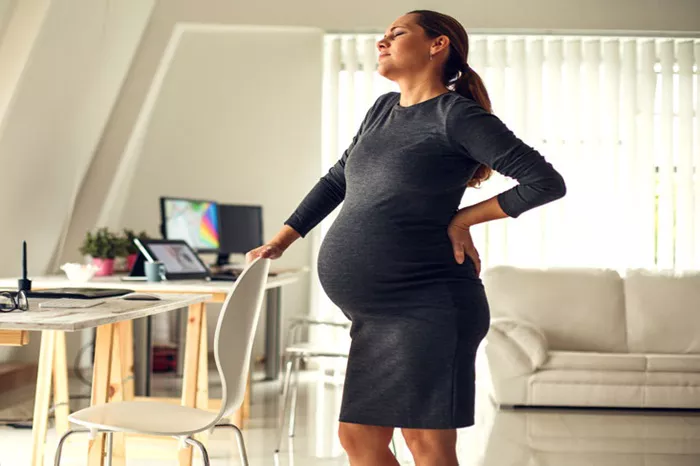Pregnancy is a unique journey filled with many changes, both exciting and challenging. Among the many experiences, pregnancy cramps are a common concern for expectant mothers. Understanding the nature of these cramps is crucial for distinguishing between normal discomfort and potential complications. This article delves into what normal pregnancy cramps feel like, their causes, and how to manage them effectively.
Causes of Normal Pregnancy Cramps
Normal pregnancy cramps often arise from the body’s adaptation to the growing fetus. Here are some common causes:
Implantation: Early in pregnancy, cramps can occur due to the implantation of the embryo into the uterine wall. This is usually mild and temporary.
Uterine Growth: As the uterus expands to accommodate the growing baby, the stretching of muscles and ligaments can cause cramping.
Ligament Pain: The round ligaments that support the uterus stretch and thicken during pregnancy, sometimes causing sharp, brief pains in the lower abdomen.
Gas and Bloating: Hormonal changes slow down digestion, leading to gas and bloating, which can cause discomfort and cramping.
Braxton Hicks Contractions: These are irregular, usually painless contractions that can start in the second trimester. They are the body’s way of preparing for labor.
Characteristics of Normal Pregnancy Cramps
Normal pregnancy cramps can vary in intensity and duration. Here are some key characteristics:
Mild to Moderate Intensity: Normal cramps are typically mild to moderate. They can feel like menstrual cramps or a dull ache in the lower abdomen.
Intermittent: These cramps are often sporadic, not constant. They may come and go and are usually short-lived.
Localized Pain: The discomfort is usually localized to the lower abdomen or pelvic area. It may also be felt in the lower back.
Associated Symptoms: Normal cramps may be accompanied by other benign symptoms such as gas, bloating, or constipation.
SEE ALSO: What Causes Group B Strep Not Pregnant?
First Trimester Cramps
During the first trimester, many women experience cramping as the body adjusts to pregnancy. Common reasons for first-trimester cramps include:
Implantation Cramps: As mentioned earlier, implantation can cause mild cramping. This typically occurs around the time a woman would expect her period.
Uterine Expansion: The uterus begins to expand from the early weeks of pregnancy, causing a stretching sensation and mild cramps.
Hormonal Changes: The surge in pregnancy hormones can cause gastrointestinal disturbances, leading to gas and bloating, which can result in cramping.
Second Trimester Cramps
In the second trimester, cramps may be due to:
Round Ligament Pain: As the uterus grows, the round ligaments supporting it stretch, which can cause sharp, brief pains on one or both sides of the abdomen.
Braxton Hicks Contractions: These are more likely to be noticed in the second trimester. They are usually painless but can cause mild cramping sensations.
Increased Blood Flow: The increased blood flow to the pelvic area can sometimes lead to mild cramping.
Third Trimester Cramps
As the body prepares for labor, third-trimester cramps can be more pronounced. Common causes include:
Braxton Hicks Contractions: These may become more frequent and intense in the third trimester, causing discomfort and cramping.
Pressure from the Baby: The baby’s growing size and movement can put pressure on the pelvis and cause cramping.
Preparation for Labor: In the weeks leading up to labor, the body begins to prepare, and mild cramping may occur as the cervix starts to soften and dilate.
When to Worry About Pregnancy Cramps
While most pregnancy cramps are normal, certain symptoms warrant medical attention:
Severe Pain: Intense, persistent pain that doesn’t go away with rest should be evaluated by a healthcare provider.
Bleeding: Cramps accompanied by vaginal bleeding, spotting, or discharge should be reported immediately.
Fever or Chills: These symptoms could indicate an infection and require prompt medical attention.
Dizziness or Fainting: Severe cramping with dizziness or fainting could signal a serious condition like an ectopic pregnancy.
Persistent Cramping: Regular, persistent cramping that doesn’t subside could indicate preterm labor, especially if it occurs before 37 weeks.
Managing Normal Pregnancy Cramps
Here are some tips for managing normal pregnancy cramps:
Rest: Resting and lying down can help alleviate cramping. Try to rest on your side to improve blood flow.
Hydration: Drink plenty of water to stay hydrated, as dehydration can cause cramping.
Warm Compress: Applying a warm (not hot) compress to the lower abdomen can provide relief.
Gentle Exercise: Gentle activities like walking or prenatal yoga can help alleviate cramping by improving circulation.
Proper Posture: Maintaining good posture can reduce pressure on the lower back and abdomen.
Dietary Adjustments: Eating small, frequent meals and avoiding gas-producing foods can reduce bloating and discomfort.
Prenatal Massage: A prenatal massage from a certified therapist can help relax muscles and relieve cramping.
Conclusion
Normal pregnancy cramps are a common experience for many women and are usually nothing to worry about. Understanding the causes and characteristics of these cramps can help expectant mothers differentiate between normal discomfort and potential complications. Always consult a healthcare provider if you have any concerns about cramping during pregnancy. With proper care and attention, most women can manage pregnancy cramps effectively and enjoy a healthy pregnancy journey.


